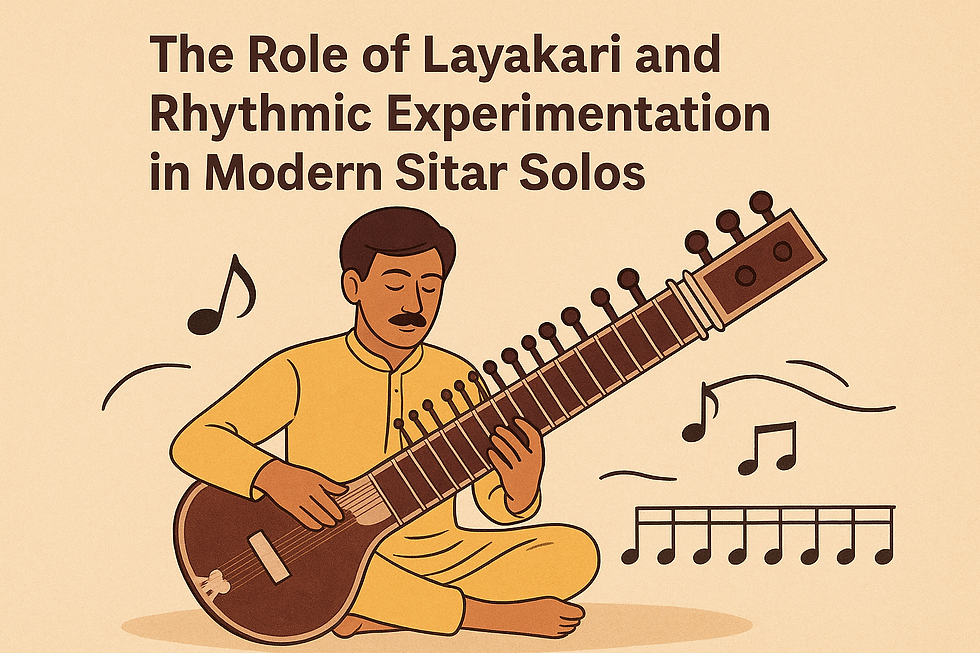"Strings of Calm: The Sitar's Therapeutic Touch"
- Sharanya naidu
- May 6
- 2 min read
Updated: May 20
The sitar, a captivating stringed instrument with origins in the Indian subcontinent, holds a significant place in the realm of spirituality, particularly within devotional and meditative music. Its rich, resonant tones and unique ability to produce microtonal variations create an atmosphere conducive to introspection, emotional connection, and a sense of inner peace.

Historical Roots and Spiritual Associations
The sitar's history traces back to long-necked lutes from Central Asia, evolving into its present form in India during the 18th century. Traditionally, it has been closely associated with meditative practices and spiritual gatherings. The instrument's intricate design, featuring a long neck, resonating gourd, and numerous sympathetic strings, contributes to its deeply resonant sound, often evoking tranquility and introspection.
The Sitar in Devotional Music
In devotional music, such as bhajans and kirtans, the sitar plays a vital role in creating a spiritual ambiance. Its tones are believed to connect both the performer and the listener to the divine, fostering a sense of peace and inner reflection. The instrument's ability to convey subtle emotional shifts within a raga (a melodic framework in Indian classical music) makes it ideal for expressing the nuances of devotion, ranging from calm contemplation to intense spiritual ecstasy.
The Sitar in Meditation
The sitar's unique sonic qualities also lend themselves beautifully to meditation. The sustained, hypnotic melodies and microtonal variations can help quiet the mind, reduce stress, and promote emotional balance. Each raga is believed to evoke specific emotions and mental states, further enhancing the meditative experience.
For instance, Raga Yaman is known to promote calm and relaxation, while Raga Bhimpalasi encourages introspection and spiritual connection. Playing or listening to these ragas can align the mind and body, fostering a harmonious state conducive to meditation and mindfulness.
Therapeutic Benefits
Beyond its spiritual applications, the sitar has also been recognized for its therapeutic benefits. Playing the instrument can be a form of self-expression, helping individuals process and release pent-up emotions. The focus and concentration required to master the sitar can also improve mental clarity and cognitive skills. Furthermore, the calming and rhythmic patterns of sitar music can help soothe the nervous system, reduce cortisol levels (stress hormones), and stimulate the production of dopamine (a mood-enhancing neurotransmitter).
In conclusion, the sitar's enchanting melodies and rich cultural heritage have established it as a powerful instrument in both devotional and meditative practices. Its unique sonic qualities and the emotional depth it can convey make it a valuable tool for spiritual exploration, emotional well-being, and the pursuit of inner peace.



Comments